Let’s start with a few contrasting numbers.
60 and 2.2.
In 1940, 60 percent of employed black women worked as domestic servants; today the number is down to 2.2 percent, while 60 percent hold white- collar jobs.
44 and 1. In 1958, 44 percent of whites said they would move if a black family became their next door neighbor; today the figure is 1 percent.
18 and 86. In 1964, the year the great Civil Rights Act was passed, only 18 percent of whites claimed to have a friend who was black; today 86 percent say they do, while 87 percent of blacks assert they have white friends.
Progress is the largely suppressed story of race and race relations over the past half-century. And thus it’s news that more than 40 percent of African Americans now consider themselves members of the middle class. Forty-two percent own their own homes, a figure that rises to 75 percent if we look just at black married couples. Black two-parent families earn only 13 percent less than those who are white. Almost a third of the black population lives in suburbia.
Because these are facts the media seldom report, the black underclass continues to define black America in the view of much of the public. Many assume blacks live in ghettos, often in high-rise public housing projects. Crime and the welfare check are seen as their main source of income. The stereotype crosses racial lines. Blacks are even more prone than whites to exaggerate the extent to which African Americans are trapped in inner-city poverty. In a 1991 Gallup poll, about one-fifth of all whites, but almost half of black respondents, said that at least three out of four African Americans were impoverished urban residents. And yet, in reality, blacks who consider themselves to be middle class outnumber those with incomes below the poverty line by a wide margin.
A Fifty-Year March out of Poverty
Fifty years ago most blacks were indeed trapped in poverty, although they did not reside in inner cities. When Gunnar Myrdal published An American Dilemma in 1944, most blacks lived in the South and on the land as laborers and sharecroppers. (Only one in eight owned the land on which he worked.) A trivial 5 percent of black men nationally were engaged in nonmanual, white-collar work of any kind; the vast majority held ill-paid, insecure, manual jobs—jobs that few whites would take. As already noted, six out of ten African-American women were household servants who, driven by economic desperation, often worked 12-hour days for pathetically low wages. Segregation in the South and discrimination in the North did create a sheltered market for some black businesses (funeral homes, beauty parlors, and the like) that served a black community barred from patronizing “white” establishments. But the number was minuscule.
Beginning in the 1940s, however, deep demographic and economic change, accompanied by a marked shift in white racial attitudes, started blacks down the road to much greater equality. New Deal legislation, which set minimum wages and hours and eliminated the incentive of southern employers to hire low-wage black workers, put a damper on further industrial development in the region. In addition, the trend toward mechanized agriculture and a diminished demand for American cotton in the face of international competition combined to displace blacks from the land.
As a consequence, with the shortage of workers in northern manufacturing plants following the outbreak of World War II, southern blacks in search of jobs boarded trains and buses in a Great Migration that lasted through the mid-1960s. They found what they were looking for: wages so strikingly high that in 1953 the average income for a black family in the North was almost twice that of those who remained in the South. And through much of the 1950s wages rose steadily and unemployment was low.
Thus by 1960 only one out of seven black men still labored on the land, and almost a quarter were in white-collar or skilled manual occupations. Another 24 percent had semiskilled factory jobs that meant membership in the stable working class, while the proportion of black women working as servants had been cut in half. Even those who did not move up into higher-ranking jobs were doing much better.
A decade later, the gains were even more striking. From 1940 to 1970, black men cut the income gap by about a third, and by 1970 they were earning (on average) roughly 60 percent of what white men took in. The advancement of black women was even more impressive. Black life expectancy went up dramatically, as did black homeownership rates. Black college enrollment also rose—by 1970 to about 10 percent of the total, three times the prewar figure.
In subsequent years these trends continued, although at a more leisurely pace. For instance, today more than 30 percent of black men and nearly 60 percent of black women hold white-collar jobs. Whereas in 1970 only 2.2 percent of American physicians were black, the figure is now 4.5 percent. But while the fraction of black families with middle-class incomes rose almost 40 percentage points between 1940 and 1970, it has inched up only another 10 points since then.
Affirmative Action Doesn’t Work
Rapid change in the status of blacks for several decades followed by a definite slowdown that begins just when affirmative action policies get their start: that story certainly seems to suggest that racial preferences have enjoyed an inflated reputation. “There’s one simple reason to support affirmative action,” an op-ed writer in the New York Times argued in 1995. “It works.” That is the voice of conventional wisdom.
In fact, not only did significant advances pre-date the affirmative action era, but the benefits of race-conscious politics are not clear. Important differences (a slower overall rate of economic growth, most notably) separate the pre-1970 and post-1970 periods, making comparison difficult.
We know only this: some gains are probably attributable to race-conscious educational and employment policies. The number of black college and university professors more than doubled between 1970 and 1990; the number of physicians tripled; the number of engineers almost quadrupled; and the number of attorneys increased more than sixfold. Those numbers undoubtedly do reflect the fact that the nation’s professional schools changed their admissions criteria for black applicants, accepting and often providing financial aid to African-American students whose academic records were much weaker than those of many white and Asian-American applicants whom these schools were turning down. Preferences “worked” for these beneficiaries, in that they were given seats in the classroom that they would not have won in the absence of racial double standards.
On the other hand, these professionals make up a small fraction of the total black middle class. And their numbers would have grown without preferences, the historical record strongly suggests. In addition, the greatest economic gains for African Americans since the early 1960s were in the years 1965 to 1975 and occurred mainly in the South, as economists John J. Donahue III and James Heckman have found. In fact, Donahue and Heckman discovered “virtually no improvement” in the wages of black men relative to those of white men outside of the South over the entire period from 1963 to 1987, and southern gains, they concluded, were mainly due to the powerful antidiscrimination provisions in the 1964 Civil Rights Act.
With respect to federal, state, and municipal set-asides, as well, the jury is still out. In 1994 the state of Maryland decided that at least 10 percent of the contracts it awarded would go to minority- and female-owned firms. It more than met its goal. The program therefore “worked” if the goal was merely the narrow one of dispensing cash to a particular, designated group. But how well do these sheltered businesses survive long-term without extraordinary protection from free-market competition? And with almost 30 percent of black families still living in poverty, what is their trickle-down effect? On neither score is the picture reassuring. Programs are often fraudulent, with white contractors offering minority firms 15 percent of the profit with no obligation to do any of the work. Alternatively, set-asides enrich those with the right connections. In Richmond, Virginia, for instance, the main effect of the ordinance was a marriage of political convenience—a working alliance between the economically privileged of both races. The white business elite signed on to a piece-of-the-pie for blacks in order to polish its image as socially conscious and secure support for the downtown revitalization it wanted. Black politicians used the bargain to suggest their own importance to low-income constituents for whom the set-asides actually did little. Neither cared whether the policy in fact provided real economic benefits—which it didn’t.
Why Has the Engine of Progress Stalled?
In the decades since affirmative action policies were first instituted, the poverty rate has remained basically unchanged. Despite black gains by numerous other measures, close to 30 percent of black families still live below the poverty line. “There are those who say, my fellow Americans, that even good affirmative action programs are no longer needed,” President Clinton said in July 1995. But “let us consider,” he went on, that “the unemployment rate for African Americans remains about twice that of whites.” Racial preferences are the president’s answer to persistent inequality, although a quarter-century of affirmative action has done nothing whatever to close the unemployment gap.
Persistent inequality is obviously serious, and if discrimination were the primary problem, then race-conscious remedies might be appropriate. But while white racism was central to the story in 1964, today the picture is much more complicated. Thus while blacks and whites now graduate at the same rate from high school today and are almost equally likely to attend college, on average they are not equally educated. That is, looking at years of schooling in assessing the racial gap in family income tells us little about the cognitive skills whites and blacks bring to the job market. And cognitive skills obviously affect earnings.
The National Assessment of Educational Progress (NAEP) is the nation’s report card on what American students attending elementary and secondary schools know. Those tests show that African-American students, on average, are alarmingly far behind whites in math, science, reading, and writing. For instance, black students at the end of their high school career are almost four years behind white students in reading; the gap is comparable in other subjects. A study of 26- to 33-year-old men who held full-time jobs in 1991 thus found that when education was measured by years of school completed, blacks earned 19 percent less than comparably educated whites. But when word knowledge, paragraph comprehension, arithmetical reasoning, and mathematical knowledge became the yardstick, the results were reversed. Black men earned 9 percent more than white men with the same education—that is, the same performance on basic tests.
Other research suggests much the same point. For instance, the work of economists Richard J. Murnane and Frank Levy has demonstrated the increasing importance of cognitive skills in our changing economy. Employers in firms like Honda now require employees who can read and do math problems at the ninth-grade level at a minimum. And yet the 1992 NAEP math tests, for example, revealed that only 22 percent of African-American high school seniors but 58 percent of their white classmates were numerate enough for such firms to consider hiring them. And in reading, 47 percent of whites in 1992 but just 18 percent of African Americans could handle the printed word well enough to be employable in a modern automobile plant. Murnane and Levy found a clear impact on income. Not years spent in school but strong skills made for high long-term earnings.
The Widening Skills Gap
Why is there such a glaring racial gap in levels of educational attainment? It is not easy to say. The gap, in itself, is very bad news, but even more alarming is the fact that it has been widening in recent years. In 1971, the average African-American 17-year-old could read no better than the typical white child who was six years younger. The racial gap in math in 1973 was 4.3 years; in science it was 4.7 years in 1970. By the late 1980s, however, the picture was notably brighter. Black students in their final year of high school were only 2.5 years behind whites in both reading and math and 2.1 years behind on tests of writing skills.
Had the trends of those years continued, by today black pupils would be performing about as well as their white classmates. Instead, black progress came to a halt, and serious backsliding began. Between 1988 and 1994, the racial gap in reading grew from 2.5 to 3.9 years; between 1990 and 1994, the racial gap in math increased from 2.5 to 3.4 years. In both science and writing, the racial gap has widened by a full year.
There is no obvious explanation for this alarming turnaround. The early gains doubtless had much to do with the growth of the black middle class, but the black middle class did not suddenly begin to shrink in the late 1980s. The poverty rate was not dropping significantly when educational progress was occurring, nor was it on the increase when the racial gap began once again to widen. The huge rise in out-of-wedlock births and the steep and steady decline in the proportion of black children growing up with two parents do not explain the fluctuating educational performance of African-American children. It is well established that children raised in single-parent families do less well in school than others, even when all other variables, including income, are controlled. But the disintegration of the black nuclear family—presciently noted by Daniel Patrick Moynihan as early as 1965—was occurring rapidly in the period in which black scores were rising, so it cannot be invoked as the main explanation as to why scores began to fall many years later.
Some would argue that the initial educational gains were the result of increased racial integration and the growth of such federal compensatory education programs as Head Start. But neither desegregation nor compensatory education seems to have increased the cognitive skills of the black children exposed to them. In any case, the racial mix in the typical school has not changed in recent years, and the number of students in compensatory programs and the dollars spent on them have kept going up.
What about changes in the curriculum and patterns of course selection by students? The educational reform movement that began in the late 1970s did succeed in pushing students into a “New Basics” core curriculum that included more English, science, math, and social studies courses. And there is good reason to believe that taking tougher courses contributed to the temporary rise in black test scores. But this explanation, too, nicely fits the facts for the period before the late 1980s but not the very different picture thereafter. The number of black students going through “New Basics” courses did not decline after 1988, pulling down their NAEP scores.
We are left with three tentative suggestions. First, the increased violence and disorder of inner-city lives that came with the introduction of crack cocaine and the drug-related gang wars in the mid-1980s most likely had something to do with the reversal of black educational progress. Chaos in the streets and within schools affects learning inside and outside the classroom.
In addition, an educational culture that has increasingly turned teachers into guides who help children explore whatever interests them may have affected black academic performance as well. As educational critic E. D. Hirsch, Jr., has pointed out, the “deep aversion to and contempt for factual knowledge that pervade the thinking of American educators” means that students fail to build the “intellectual capital” that is the foundation of all further learning. That will be particularly true of those students who come to school most academically disadvantaged—those whose homes are not, in effect, an additional school. The deficiencies of American education hit hardest those most in need of education.
And yet in the name of racial sensitivity, advocates for minority students too often dismiss both common academic standards and standardized tests as culturally biased and judgmental. Such advocates have plenty of company. Christopher Edley, Jr., professor of law at Harvard and President Clinton’s point man on affirmative action, for instance, has allied himself with testing critics, labeling preferences the tool colleges are forced to use “to correct the problems we’ve inflicted on ourselves with our testing standards.” Such tests can be abolished—or standards lowered—but once the disparity in cognitive skills becomes less evident, it is harder to correct.
Closing that skills gap is obviously the first task if black advancement is to continue at its once-fast pace. On the map of racial progress, education is the name of almost every road. Raise the level of black educational performance, and the gap in college graduation rates, in attendance at selective professional schools, and in earnings is likely to close as well. Moreover, with educational parity, the whole issue of racial preferences disappears.
The Road to True Equality
Black progress over the past half-century has been impressive, conventional wisdom to the contrary notwithstanding. And yet the nation has many miles to go on the road to true racial equality. “I wish I could say that racism and prejudice were only distant memories, but as I look around I see that even educated whites and African American…have lost hope in equality,” Thurgood Marshall said in 1992. A year earlier The Economist magazine had reported the problem of race as one of “shattered dreams.” In fact, all hope has not been “lost,” and “shattered” was much too strong a word, but certainly in the 1960s the civil rights community failed to anticipate just how tough the voyage would be. (Thurgood Marshall had envisioned an end to all school segregation within five years of the Supreme Court s decision in Brown v. Board of Education.) Many blacks, particularly, are now discouraged. A 1997 Gallup poll found a sharp decline in optimism since 1980; only 33 percent of blacks (versus 58 percent of whites) thought both the quality of life for blacks and race relations had gotten better.
Thus, progress—by many measures seemingly so clear—is viewed as an illusion, the sort of fantasy to which intellectuals are particularly prone. But the ahistorical sense of nothing gained is in itself bad news. Pessimism is a self-fulfilling prophecy. If all our efforts as a nation to resolve the “American dilemma” have been in vain—if we’ve been spinning our wheels in the rut of ubiquitous and permanent racism, as Derrick Bell, Andrew Hacker, and others argue—then racial equality is a hopeless task, an unattainable ideal. If both blacks and whites understand and celebrate the gains of the past, however, we will move forward with the optimism, insight, and energy that further progress surely demands.
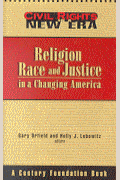
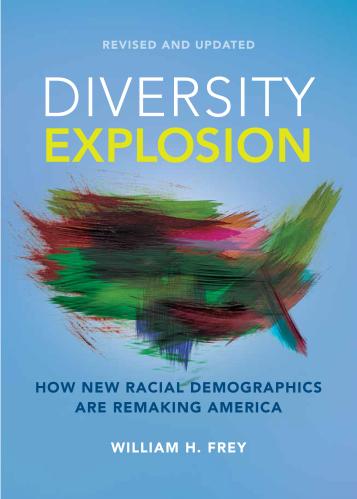
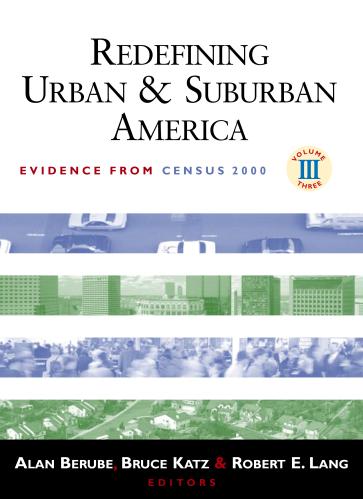
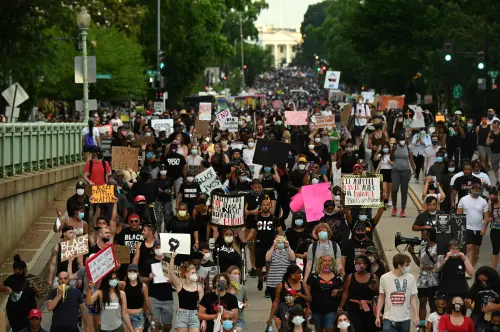
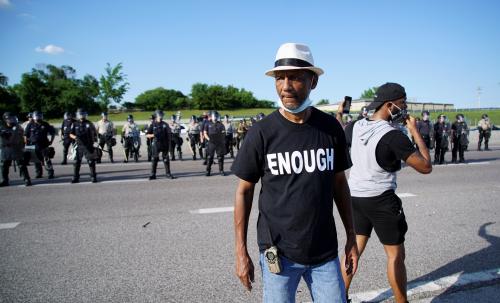



Commentary
Black Progress: How far we’ve come, and how far we have to go
March 1, 1998